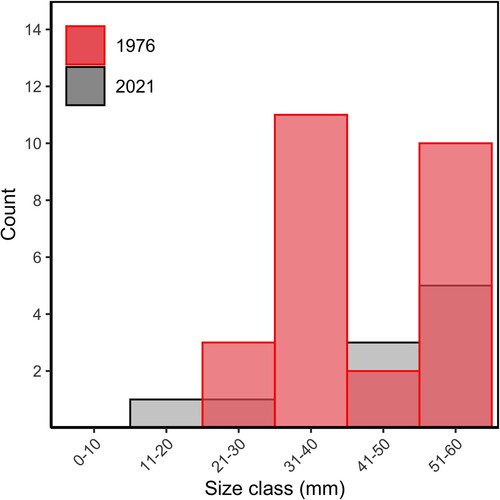Figures & data
Figure 1. Location of study site. A, Map of New Zealand with B an enlarged map of Banks Peninsula, C, an enlarged map of Peraki Bay and surrounding Bays, D, Peraki Bay with transect locations completed in 1976 and 2021 (+), tagging locations (red circles), substrate types, and sampling strata (between black lines): W.I., western inner; W.M., western middle; W.O., western outer; E.I., eastern inner; E.M., eastern middle; E.O., eastern outer (adapted from Sainsbury 1982). The tagging location in E.I. is where tagging occurred in 2021, whereas the tagging location in E.M. is where tagging occurred in 1976.
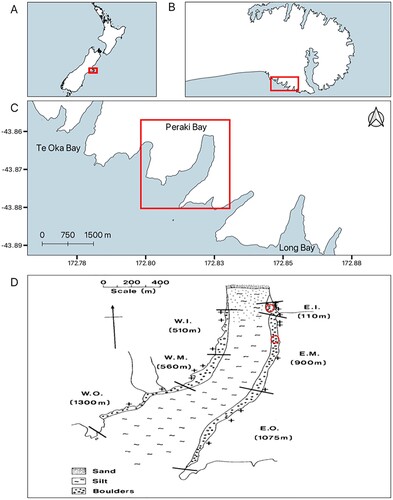
Figure 2. Transect location and Haliotis iris count in 1976 (left), and 2021 (right) in Peraki Bay, Banks Peninsula, New Zealand.
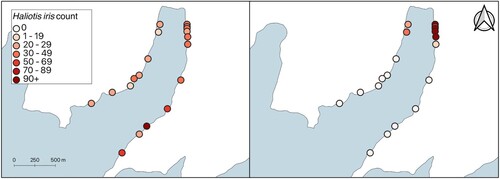
Figure 3. Size (mm) frequency of Haliotis iris within Peraki Bay, Banks Peninsula, New Zealand, in February 1976 (red, n = 691), and March 2021 (grey, n = 724).
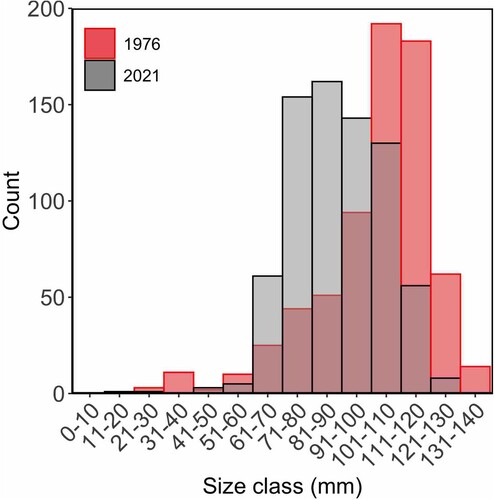
Figure 4. Size (mm) frequency of Haliotis iris in strata of Peraki Bay, Banks Peninsula, New Zealand, in February 1976 (red, n = 691) and March 2021 (grey, n = 724). Sampling strata: W.I., western inner; W.M., western middle; W.O., western outer; E.I., eastern inner; E.M., eastern middle; E.O., eastern outer.
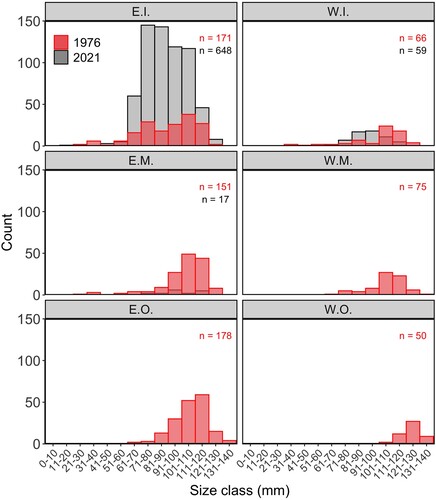
Figure 5. Growth increment (mm) and initial length (mm) of Haliotis iris within Peraki Bay, Banks Peninsula, New Zealand, in February 1976 (red, n = 37) and March 2021 (grey, n = 11).
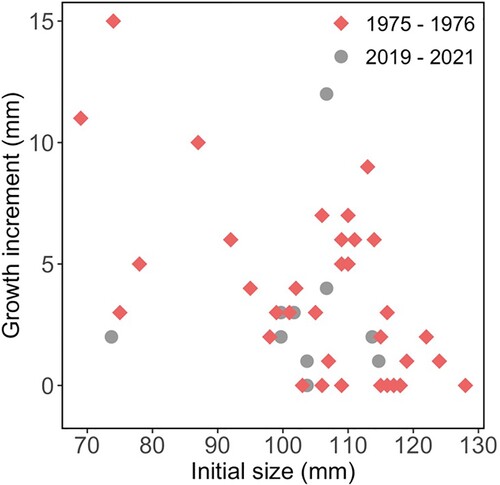
Table 1. The parameters of the von Bertalanffy growth equation, 95% confidence intervals (CI), and supporting information (n and initial shell length at release) for Haliotis iris in Peraki Bay, Banks Peninsula, New Zealand, in 1976 and 2021.
Table 2. Total mortality rate (Z) ± 95% confidence interval (CI) for adult (> 59 mm) Haliotis iris in Peraki Bay, Banks Peninsula, New Zealand, from 1976 (n = 37) and 2021 (n = 11), using methods from Beverton and Holt (Citation1956) and Ssentongo and Larkin (Citation1973).
Figure 6. Mean gonad index for adult (>100 mm) Haliotis iris in Peraki Bay, Banks Peninsula, New Zealand from 1973 to 1976 (red, n = 7–25), and 2019–2021 (grey, n = 10–15 per sapling event).

Figure 7. Fecundity (number of eggs x 106) vs length (mm) of Haliotis iris in Peraki Bay, Banks Peninsula, New Zealand in February 1976 (n = 35), November 2019 (n = 7), November 2020 (n = 9), and March 2021 (n = 11).
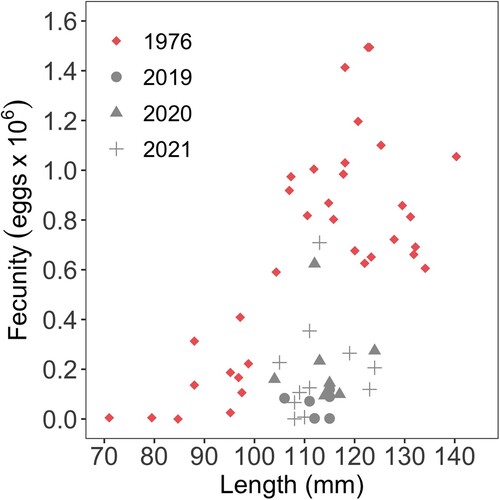
Table 3. Population parameters of Haliotis iris sampled in Peraki Bay in 1976 and 2021. Errors (±) are 95% confidence intervals for population size and juvenile abundance, and standard errors for individual growth rate, mortality, and fecundity. MLS = minimum legal harvestable size.
Figure 8. Count of Haliotis iris ≤60 mm in Peraki Bay, Banks Peninsula, New Zealand in 1976 (red, n = 26) and 2021 (grey, n = 10).
